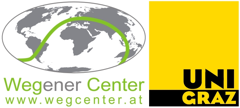How can we build more with fewer materials and greenhouse gas emissions? How can low-resource and low-emissions buildings become an EU standard?
These were the topics at a top-class panel discussion chaired by the Center for European Policy Studies (CEPS), which took place in Brussels on 6 July 2023 in the framework of the ReConstruct platform, which is a joint initiative by the Austrian Institute of Economic Research (WIFO) and CEPS.
The updated EU Industrial Strategy emphasizes a rapid transition to low-carbon, digital, and more resilient construction. This will require cooperation among many stakeholders, including governments, both at the EU and Member-State level, various industry sectors, public authorities, social partners, or civil society. It will be essential for low-carbon, digital and resilient construction to involve the full value chain from cradle to cradle. The joint CEPS and WIFO meeting is the start of a series that will discuss innovative approaches to buildings, construction, and housing development and what policy changes will be required to ensure that the existing and future potential can be realized.
Peter Flotzinger, Senftenbacher Ziegelwerk
He presented the »Brickbauhaus 2050«. a sophisticated climate-neutral building concept that considers nine pillars over the entire life cycle. He emphasized the importance of providing green energy on an industrial Marcella Saade, TU Graz scale.
Marcella Saade, TU Graz
She demonstrated that ceiling constructions with 3D-printed displacement bodies already make today up to 40 percent of CO2 savings possible. The slender concrete structure pays nothing in terms of sustainability but makes a significant contribution to climate protection.
Sebastian Spaun, VZÖ
He emphasized that thermal component activation – in combination with renewable energies – is one of the highlights of cross-sector innovations, which integrate concrete technology, energy systems, and building technology. Thus, thermal component activation has a high potential for becoming an Austrian export hit.
Katharina Knapton-Vierlich, DG GROW
She put the EU’s Transition Pathway for Construction at the center of her statement because 33 percent of all waste comes from construction, 40 percent of energy consumption is in buildings, 70 percent of which are inefficient. Levels is the new EU framework for sustainable buildings.




